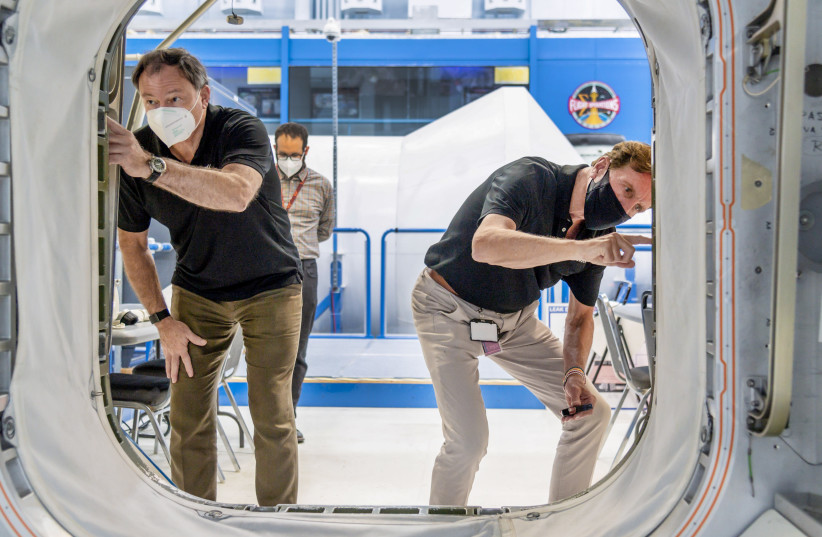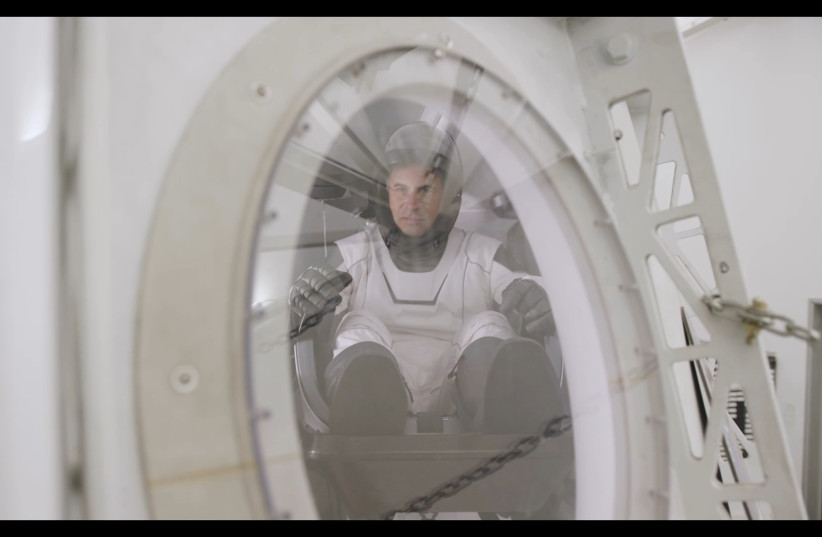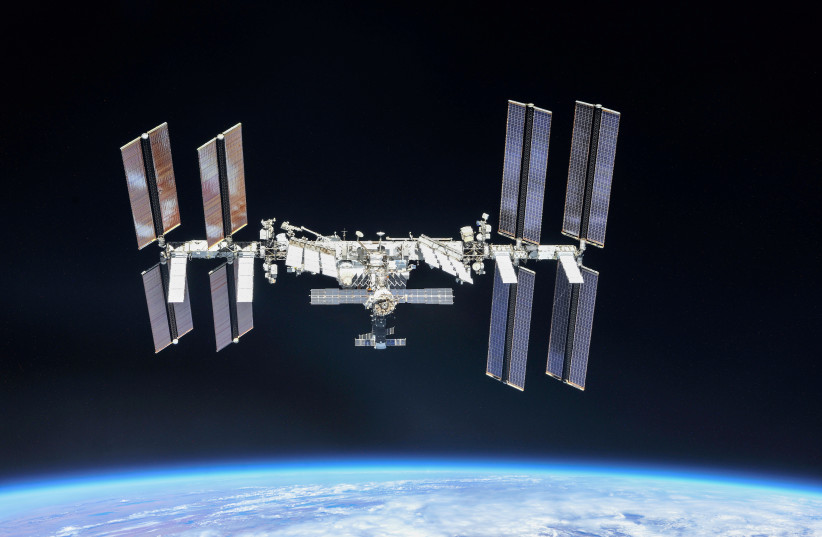26.01.2022
Israeli astronaut Eytan Stibbe will conduct 35 scientific space experiments with the 'Rakia' mission to the International Space Station set for mid-February.
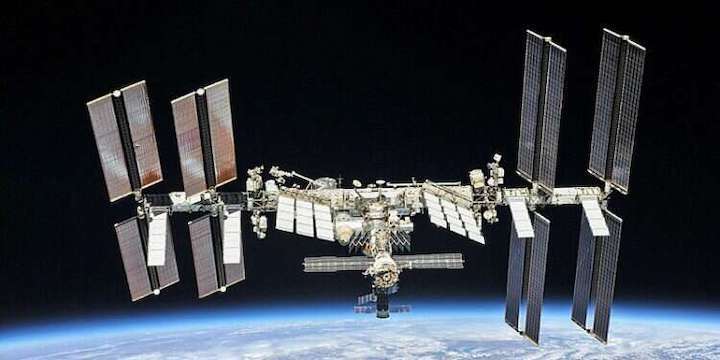
An Israeli space mission announced on Monday that NASA has approved 35 of its experiments after passing regulations and testing.
The 'Rakia' mission to the International Space Station set for mid-February will see Israeli astronaut Eytan Stibbe conduct the scientific space experiments, Israeli news outlet Calcalist first reported.
Stibbe's flight – partially sponsored by The Ramon Association, Israel Space Agency, and the Innovation, Science, and Technology Ministry – will make him one of the first private astronauts to embark to space along with his Ax-1 crew.
During the 10-day expedition, Stibbe and his team will perform experiments and test innovative technologies ranging from medicine to astrophysics, agriculture, and more.
Following are nine of the planned projects:
Medicine:
"Space travel" – Examining the physiological responses seen when the human body is exposed to extreme conditions.
Human BBB (Blood Brain Barrier) – Attempts to find a cure for Alzheimer's disease.
Chemotherapy – Researchers will study leukemia cells under microgravity conditions in the presence of chemotherapy.
Optics & Communications:
NISSAN nano-ISS antenna – A pop-up antenna capable of delivering high-bandwidth communications in space.
Electromagnetism – Study how Earth's magnetic field protects us from charged particles and cosmic radiation, and search for methods to improve navigational systems.
Astrophysics:
AstroRad – A special vest that will be worn by Stibbe, and protects astronauts against cosmic radiation in space.
Subscribe to Israel Hayom's daily newsletter and never miss our top stories!
Agriculture:
Space hummus – Synthetic biology to grow chickpea plants in space. This will enable astronauts to grow different types of plants in space, perhaps on a future lunar settlement.
Fresh greens – Super-vegetables in space filled with nutrients and dietary supplements that can be grown under microgravity conditions in an autonomous growing facility.
Meat for space – Allowing astronauts to grow cow cells for cultured meat in microgravity conditions.
Quelle: ISRAEL HAYOM
----
Update: 31.01.2022
.
Space hummus: Israeli researchers to grow chickpeas on space station
Israeli experiments on the International Space Station to focus on creating sustainable food sources for astronauts.
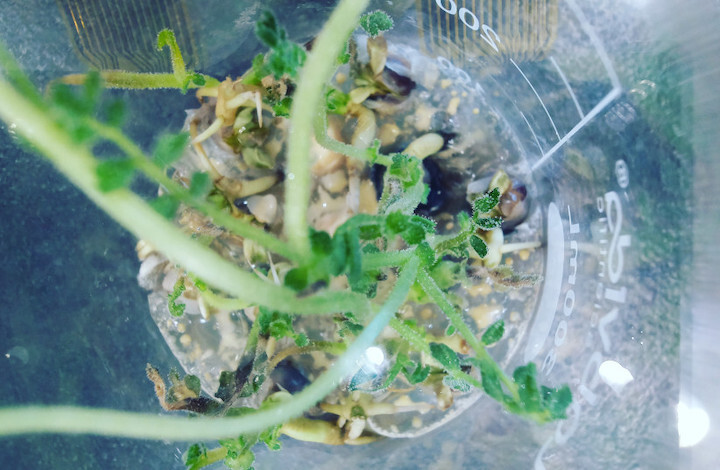
Space travel is fraught with numerous major challenges and obstacles that astronauts must overcome. While advancements have been made to allow for comparatively short trips into orbit, such as a stay in the International Space Station (ISS), any long-term term travel or stay in space is a far more difficult prospect.
One of the biggest challenges that need to be overcome is having a sustainable food supply. While NASA has made advancements in this regard in the past with its food, there are still issues with it.
Most food is either dehydrated or vacuum-sealed due to a lack of room for refrigerators on the ISS, and supplies only arrive every few months. This may be fine for upkeep of a space station, but it is wholly unsustainable for longer space flights and longer stays on say Mars or the Moon.
This is where Israel comes in.
Israel's space food experiments
A number of Israeli experiments are heading to the ISS where, as part of the Rakia Mission, they will be tested to see if they can be a viable option for bringing a sustainable food source to space.
The Rakia mission to the International Space Station. (credit: AXIOM SPACE)
One of these experiments is set to see if a viable option for sustainable food in space could be a classic bit of Israeli cuisine: hummus.
This is no small research effort, combining the efforts of researchers from Israel and Stanford University, the Moon2Mars Ventures venture capital fund, the Desert Mars Analog Ramon Station (D-Mars) and even high school students at the Yeruham Science Center, not to mention Eytan Stibbe, who is set to be the first Israeli astronaut to head to space since Ilan Ramon and the second to do so ever.
But out of all the possible foods to pick from, why hummus?
Why choose to grow chickpeas in space?
There are a few reasons for this.
Firstly, chickpeas are considered a superfood, being extremely high in protein, carbs and vitamins and very filling. Not only that, but they are also very easy to grow. They have a very short seed to seed cycle and can grow in high or low temperatures, or in conditions some might find to be extreme.
Israeli astronaut Eitan Stibbe. (credit: ORI BURG/SPACEX)
But in space, away from Earth’s soil, resources and sunlight, extreme conditions are like nothing ever tried before.
“We don’t know if chickpeas can grow in space. This is something that has actually never been done before,” explained Yonatan Winetraub, co-founder of SpaceIL and the visionary behind the experiment.
“The challenge is not just how to grow as many chickpeas as possible, but how to control the way they are grown – so that we maximize our limited resources. The more we learn to grow food with fewer resources, the more prepared we will be for the challenges that await us on Earth, as well.”
This field of study is something that has been called synthetic biology, and it is key to growing agricultural crops for food in space and making space travel and colonies a viable option.
The chickpea seeds, contained in a “miniature greenhouse,” will be sent to the ISS on February 19 on Northrop Grumman’s 17th commercial resupply services mission. However, the experiment will not begin until Stibbe arrives for the Rakia Mission, after his March 31 takeoff.
The International Space Station (ISS) photographed by Expedition 56 crew members from a Soyuz spacecraft after undocking, October 4, 2018. (credit: NASA/Roscosmos/Handout via REUTERS)
Stibbe will only be on the ISS for a brief period but the experiment will continue after he leaves. The cameras in the miniature greenhouse will allow for remote viewing and control of the LED lights used to provide nutrients to the chickpeas so scientists can track its growth and see if they can control it.
This will be compared to chickpeas also being grown on Earth, specifically at the D-Mars station in Mitzpe Ramon, which is meant to simulate the conditions of Mars. The data from the two will be analyzed by high school students from Yeruham Science Center.
The experiment’s outcome is highly anticipated, as it could be seen as a major step in solving the astronaut food crisis.
Astronaut sustainable food crisis.
THIS CRISIS is also something NASA has noted. Recently, the US space agency launched a new initiative called the Deep Space Food Challenge, which seeks for innovative ways to provide astronauts with a sustainable food source, and have offered $1 million for this effort.
“Feeding astronauts over long periods within the constraints of space travel will require innovative solutions,” explained Jim Reuter, associate administrator for NASA’s Space Technology Mission Directorate. “Pushing the boundaries of food technology will keep future explorers healthy and could even help feed people here at home.”
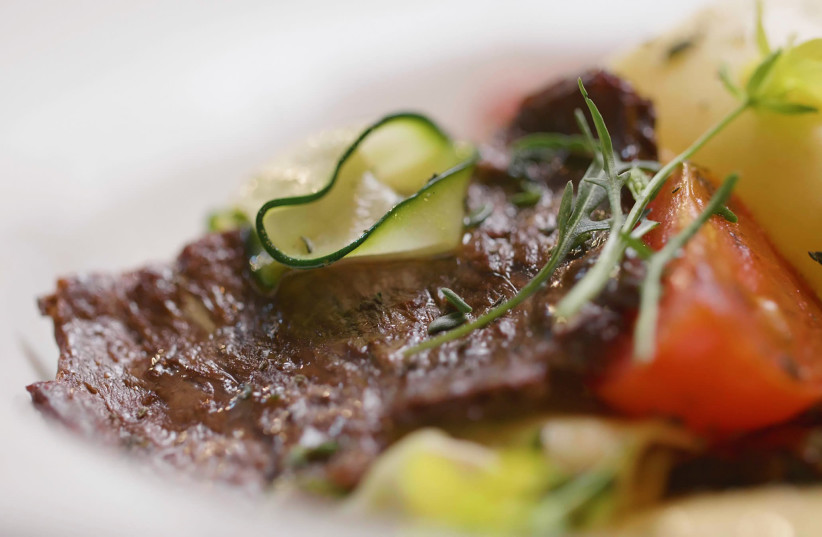
And it isn’t just agriculture that people are trying. Another Israeli experiment is hoping to provide astronauts with something a little different than vegetables: steak.
Israeli company Aleph Farms has been making headlines in recent years for its innovations in alternative meat production. Essentially, it focuses on making meat from cultivated non-genetically engineered cow cells, a process that is very eco-friendly and animal-friendly.
A major advantage of this process is that it both saves considerable amounts of resources and requires no harm to animals while still providing all the nutritional and taste benefits of beef.
According to a recent life-cycle analysis, cultivated beef can significantly cut down on the overall environmental footprint of beef production, reducing greenhouse gas emissions by 92%, land use by 95%, and water use by 78% compared to intensive livestock farming.
Already, the company has seen considerable success in its research, such as growing a quality rib-eye steak entirely from cultivated cells.
But its success hasn’t just been limited to Earth. In 2019, in collaboration with Russia-based 3D Bioprinting Solutions, Aleph Farms managed to send cow cells to the ISS and was able to make them form muscle tissue.
Now, the Rehovot-based firm is once again reaching for the stars.
But there are other challenges in space they would need to overcome.
Why is it so hard to grow food in space?
Due to the lack of gravity, fluids behave very differently in space than on Earth. Not only that, but the lack of gravity in space is known to induce adverse effects on both the physiological and cellular levels. Essentially, this means that cells can be severely affected in a number of ways, such as size, shape and even cell death.
This is, naturally, something that is known to affect astronauts, who are known to suffer from medical conditions like bone loss or muscle atrophy due to their time in microgravity. But this could also affect cultivated cells, too, so this experiment will yield needed information about that.
But to make matters even more complicated, the degree of microgravity is not the same everywhere. The amount of gravity found in the ISS is different from the Moon, which is also different from Mars, which is also different from deep space and so on.
“On the lunar soil for example, we’ll recover some 17% gravity, and 38% on Mars,” Aleph Farms explained. This, however, means that they will need to develop a very agile robust system, which will directly benefit Earth.
This experiment is not the only way Aleph Farms is testing its technology in space. The company is also currently working on an experiment to see if it can provide cultivated steak production for a three-year mission in space. This project, which has advanced to phase 2 of NASA’s Deep Space Food Challenge, will further allow astronauts to customize their steaks’ nutritional composition, and even enhance it with more vitamins and minerals if needed.
But why does Aleph Farms want to go to space at all? The company already is making real strides to significantly fight food insecurity and climate change on Earth, so what made it want to take its technology to space?
Why does Aleph Farms want to go to space?
Aside from the benefits it can do to advance space travel, there is another reason: It can further prove the viability and functionality of its product.
Aleph Farms compared itself in this regard to car manufacturers and Formula 1 teams. Before they bring their products into the mainstream, they first test them in the toughest of environments. That is exactly what Aleph Farms is doing: Testing its product in an environment devoid of nearly any other resources, and then applying its technique on Earth.
“Food security is critical on Earth but also in space,” the company noted.
“In our space program, Aleph Zero, we’re building a resilient infrastructure to ensure food security during long-term space missions, and even for space colonies, while advancing our production efficiencies on Earth.”
Quelle: The Jerusalem Post


